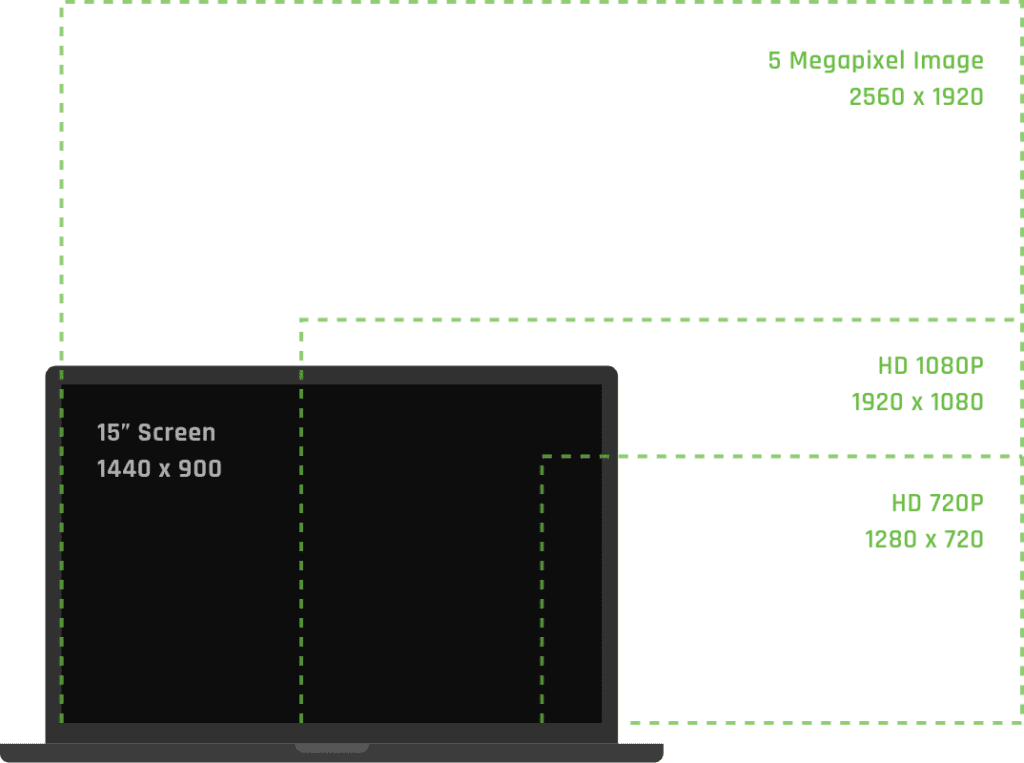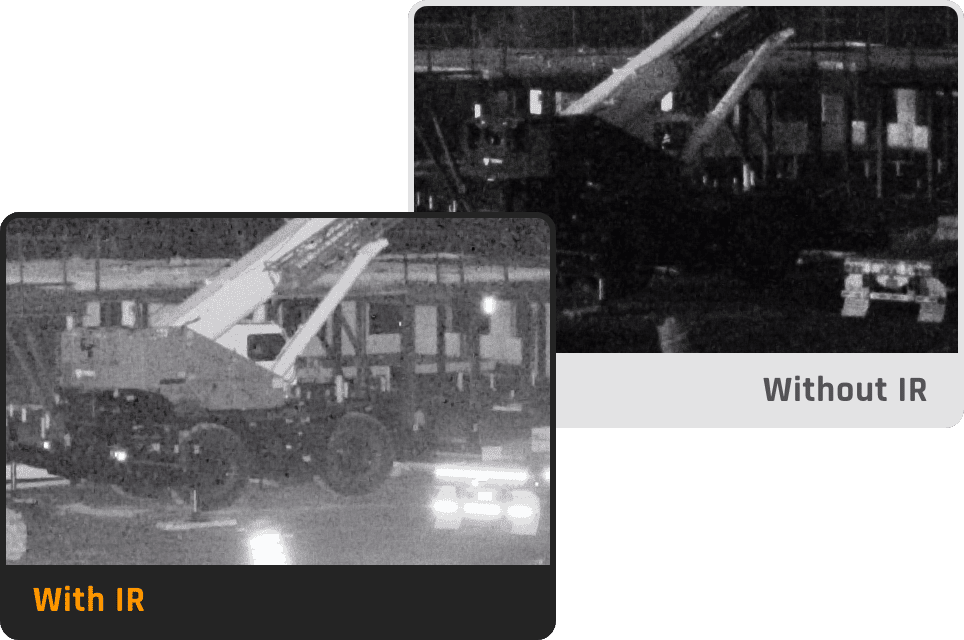Jobsite Camera Specs 101
A Practical Guide for Informed Buying
Understanding Key Jobsite Camera Specifications
With numerous factors affecting construction projects, remote monitoring through a jobsite camera is an effective solution for builders and project managers. However, navigating the technical terms and specifications can be overwhelming when selecting the right camera for your project.
To help you make the best choice for safety, productivity, and security, here are the essential jobsite camera specifications to consider.
Why Image Resolution Matters in a Jobsite Camera
One of the most commonly discussed specifications is the megapixel (MP) count. But what exactly does it mean? A megapixel refers to the number of pixels (tiny dots of color) in an image. For example, a 5MP camera captures images with a resolution of 2592 x 1944 pixels. To put it into perspective, think of the dimensions as the size and scale of the image.
Fixed camera resolutions can range anywhere from 2 to 20 MP. While a lower MP camera can provide a decent level of detail for basic monitoring needs, higher resolution cameras like a 12MP or 20MP are excellent for capturing high-detail images.

Video Quality Considerations for Your Jobsite Camera
When it comes to video quality, two common terms you’ll encounter are 1080p and 4K. 1080p refers to a resolution of 1920 x 1080 pixels, and 4K offers a higher resolution of 3840 x 2160 pixels. More pixels equal sharper image quality, which is crucial to capturing important details on your jobsite camera.
Clear video enables project managers and stakeholders to closely monitor progress, identify any issues, and ensure quality control. Moreover, it helps with the detection of safety violations, promoting a safer work environment and facilitating prompt corrective actions when necessary.
Why Frames per Second (FPS) Matters
Frames per Second (FPS) refers to the number of frames (individual images) captured by the camera per second in a video. The industry standard is typically around 24-30 fps. For a jobsite camera, this range is sufficient. You may see some cameras that boast a higher fps, but it’s important to know that to the naked eye, you won’t be able to tell a difference in video quality.
Choosing the Right Focal Length for a Jobsite Camera
Focal length determines the magnification and angle of view provided by a camera lens. For example, imagine you’re standing at a fence and looking at a sprawling farm field with a small red barn in the distance. At 20mm focal length, the barn appears as a tiny red dot on the horizon. But at 120mm focal length, you can now see the barn, its roof, and the trees around it fairly clearly. You can even spot the second, smaller barn nearby that you couldn’t see before!
A good fixed jobsite camera usually has a focal length ranging from 4–20mm. This range allows you to capture a broad view of your jobsite. For a PTZ, you can expect to see much higher focal lengths, with a good PTZ having a focal length of 4–100+mm to allow clear viewing of objects far away.
Understanding Field of View (FOV)
Field of View (FOV) refers to the area visible through the camera lens. A wider field of view provides you with a vast amount of data and information by allowing you to see more at once. With a camera that offers wide-angle coverage, you may not need multiple cameras to monitor your entire jobsite effectively.
Enhancing Jobsite Security with Infrared (IR)
Infrared (IR) sensors are devices that detect infrared radiation, which is invisible to the human eye. These sensors detect the heat emitted by objects and convert it into a visible image, allowing cameras to capture clear footage in low-light conditions. Cameras with built-in IR are particularly useful for projects that operate around the clock or require continuous monitoring overnight.
IR range in jobsite cameras refers to the maximum distance at which the camera’s infrared sensors can capture clear images in low light conditions. This range can vary between different camera models and should be considered when selecting a camera suitable for the size and requirements of the construction site.

The Importance of Hardware Ratings
There are three common rating systems for the durability of cameras, accessories, and enclosures:
- Ingress Protection (IP) ratings tell you how protected your equipment will be against dust and liquids.
- NEMA ratings provide information on an electrical enclosures’ ability to withstand water, corrosion, and other hazards.
- IK ratings tell you a component’s level of protection against impact and vandalism.
By understanding and considering these ratings, project managers and builders can select cameras and equipment that are best suited to the specific conditions of their construction sites.
Other Important Considerations for Jobsite Cameras
In addition to the specifications mentioned above, there are a few more factors to consider when selecting a construction site camera:
- Adequate storage space: Make sure the camera includes enough data for your project requirements. Running out of storage or incurring additional charges for exceeding limits can be frustrating and expensive.
- Connectivity options: Look for a camera with built-in 4G LTE or the ability to connect to onsite Wi-Fi. This ensures you can access the camera remotely without driving up your data costs.
- Ease of use: Installation and operation should be straightforward. Choose a camera that doesn’t require excessive technical expertise to set up and operate effectively.
- Responsive support: No system is perfect, so reliable and responsive customer support is crucial. Ensure the camera provider offers prompt assistance when you need it.
Why Choose TrueLook for Your Jobsite Camera Needs
At TrueLook, we understand the importance of creating a safe and efficient environment for your next build. Our construction cameras are designed to improve jobsite communication, safety, and productivity. With our range of products, you can be sure that every essential specification is met or exceeded.
